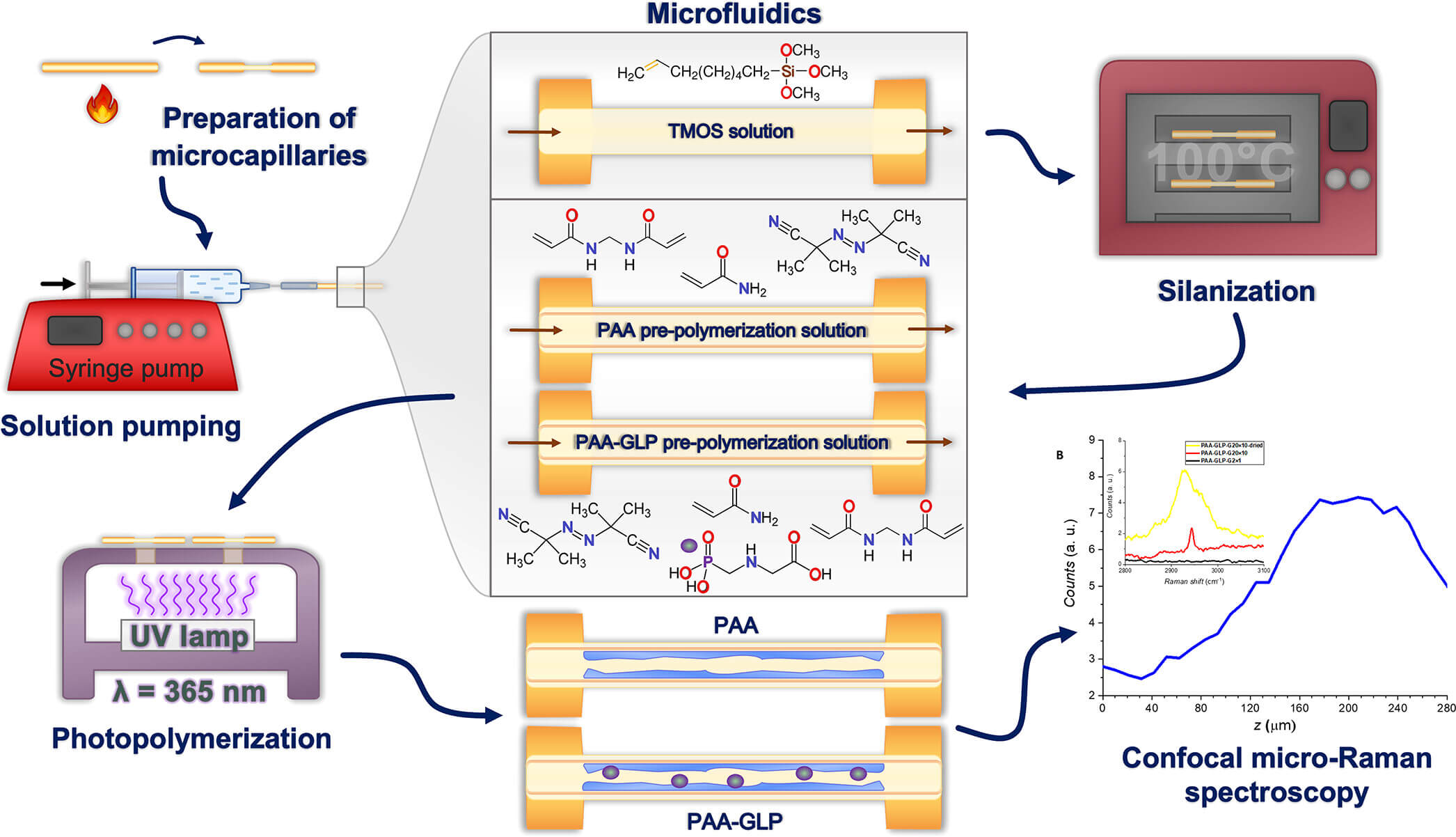Grupa Badawcza Technologii Materiałów Funkcjonalnych
Grupa Badawcza Nanocharakteryzacji Optycznej
Grupa Badawcza Inverse Materials Design
Grupa Badawcza Systemów Energetycznych Nowej Generacji
Grupa Badawcza Zastosowań Biofotonicznych
Grupa Badawcza Konwersji Energii Słonecznej
Grupa Badawcza Monokryształów Tlenkowych
Grupa Badawcza Związków Półprzewodnikowych A3B5
Laboratoria
Laboratorium Krystalizacji Materiałów A3B
Laboratorium Monokrystalizacji Materiałów Tlenkowych
Laboratorium Optycznej Nanocharakteryzacji Materiałów
Laboratorium Materiałów Funkcjonalnych
Newsletter
Kontakt
Ensemble3 sp. z o.o.
01-919 Warszawa
ul. Wólczyńska 133
NIP 1182211096
KRS 0000858669
In-capillary photodeposition of glyphosate-containing polyacrylamide nanometer-thick films
Czworo naukowców z Centrum Doskonałości E3: Katarzyna Klepacka, Piotr Piotrowski, Piotr Paszke i Dorota A. Pawlak, współpracując w ramach międzynarodowego zespołu z badaczami Instytutu Chemii Fizycznej Polskiej Akademii Nauk z Warszawie oraz Instytutu Fizyki Doświadczalnej „Nello Carrara” Krajowej Rady Naukowej (IFAC-CNR) z Florencji, zrealizowało badania nad fotoosadzaniem chemicznie modyfikowanych nanowarstw poliakrylamidowych.
Mikrocharakteryzacja, m.in. mikroskopia AFM i mikroramanowskie konfokalne skanowanie w głąb materiału, potwierdziła efektywność wytwarzania warstw organicznych oraz ich powstanie na wewnętrznej powierzchni mikrokapilar, co zostanie wykorzystane w projektowaniu czujników mikroprzepływowych.
Wyniki badań zostały opublikowane w artykule zatytułowanym: In-capillary photodeposition of glyphosate-containing polyacrylamide nanometer-thick films w czasopiśmie ACS Applied Polymer Materials.
Artykuł pojawił się na okładce czasopisma, które w wersji internetowej można znaleźć pod linkiem:
https://pubs.acs.org/doi/10.1021/acsapm.2c01461
Abstract
The present research reports on in-water, site-specific photodeposition of glyphosate (GLP)-containing polyacrylamide (PAA-GLP) nanometer-thick films (nanofilms) on an inner surface of fused silica (fused quartz) microcapillaries presilanized with trimethoxy(octen-7-yl)silane (TMOS). TMOS was chosen because of the vinyl group presence in its structure, enabling its participation in the (UV light)-activated free-radical polymerization (UV-FRP) after its immobilization on a fused silica surface. The photodeposition was conducted in an aqueous (H2O/ACN; 3:1, v/v) solution, using UV-FRP (λ = 365 nm) of the acrylamide (AA) functional monomer, the N,N′-methylenebis(acrylamide) (BAA) cross-linking monomer, GLP, and the azobisisobutyronitrile (AIBN) UV-FRP initiator. Acetonitrile (ACN) was used as the porogen and the solvent to dissolve monomers and GLP. Because of the micrometric diameters of microcapillaries, the silanization and photodeposition procedures were first optimized on fused silica slides. The introduction of TMOS, as well as the formation of PAA and PAA-GLP nanofilms, was determined using atomic force microscopy (AFM), scanning electron microscopy with energy-dispersive X-ray (SEM–EDX) spectroscopy, and confocal micro-Raman spectroscopy. Particularly, AFM and SEM–EDX measurements determined nanofilms’ thickness and GLP content, respectively, whereas in-depth confocal (micro-Raman spectroscopy)-assisted imaging of PAA- and PAA-GLP-coated microcapillary inner surfaces confirmed the successful photodeposition. Moreover, we examined the GLP impact on polymer gelation by monitoring hydration in a hydrogel and a dried powder PAA-GLP. Our study demonstrated the usefulness of the in-capillary micro-Raman spectroscopy imaging and in-depth profiling of GLP-encapsulated PAA nanofilms. In the future, our simple and inexpensive procedure will enable the fabrication of polymer-based microfluidic chemosensors or adsorptive-separating devices for GLP detection, determination, and degradation.




